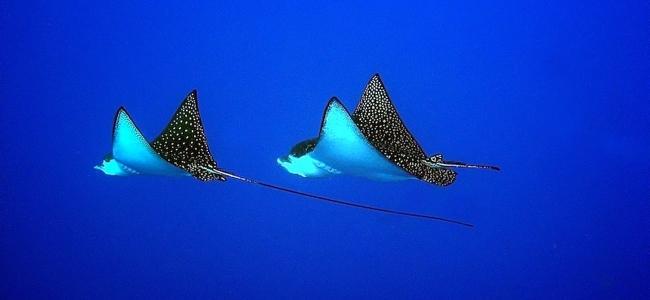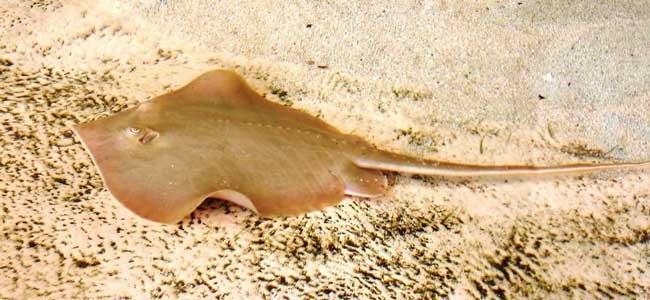Elasmobranchs are a subclass that together with chimaeras are part of the class of cartilaginous fishes (Chondrichthyes). The skeleton of the Elasmobranchs is made of cartilage and the body is covered with dermal denticles with a very rough touch. Among the distinctive features of this group of fish, we find, in addition to the previously mentioned, between 5 and 7 gill openings, as well as rigid dorsal fins. The mouth is situated in a more or less ventral position, and has numerous rows of teeth, which are generally not attached to the jaw, and which they replace in a serial way throughout their lives. They have nasal openings on both sides of the head and are generally unique and in a more or less ventral position.
Instead of maintaining buoyancy like many species using the swim bladder, Elasmobranchs do so by the presence of very abundant amounts of oils in the liver. Fertilization is internal in almost all species, and they have some of the longest gestation periods among all Vertebrates, in some species reaching up to 2 years.
Typically, Elasmobranchs are predators with extremely developed senses of smell and sight, which they use to search for their prey, among which we find Mammals, large fish and even Crustaceans.
There are approximately 1,150 known species of Elasmobranchs, grouped into 13 orders, 51 families and 189 different genera. Approximately half of the species are sharks (513), and the other half are rays (636). They are mostly marine species, although there are approximately 60 species described that permanently inhabit fresh waters.
We can classify the Elasmobranchs in two big groups, the sharks (Selachii) and the rays (Batomorphii).
- SharksThe gill openings are located in a mostly lateral position. The anterior region of the pectoral fin edge is not attached to the head, and the anal fin may be present or absent. We can classify sharks into...
- Ground Sharks
- Six-Gill Sharks
- Mackerel Sharks
- Carpet Sharks
- Dogfish Sharks
- Angel Sharks
- Bullhead Sharks
- Saw Sharks
- /li>
- raysVery compressed body dorso-ventraly, where the gill openings are located in a ventral position. The anterior region of the pectoral fin edge is attached to the head. Jaws protruding in most species. The eyes have no nictitating membrane and the cornea is directly attached to the skin around the eye. In most species, the water for breathing is taken through the spiracles and not from the mouth. Both the eyes and the spiracles are located on the dorsal surface of the body. No anal fin. We can classify the rays in...



